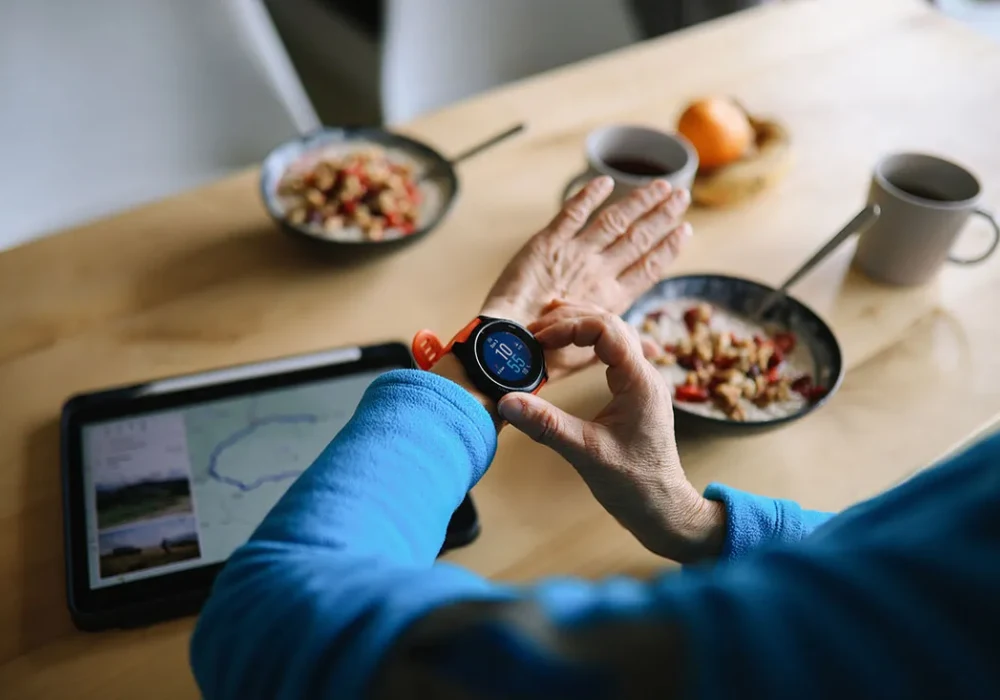Chronic disease, mental health conditions and lifestyle-related risks continue to challenge healthcare systems worldwide. Alongside traditional treatment, digital wearables and continuous monitoring technologies are emerging as tools to support prevention and self-management. Simple metrics such as step count or sleep duration can be gathered passively, offering individuals immediate feedback on daily habits. When analysed with artificial intelligence or machine learning, these data streams can yield personalised insights into how behaviour influences health outcomes. With global figures showing over one billion people living with obesity and nearly a billion affected by mental health disorders, integrating accessible monitoring tools into preventive care presents an opportunity to strengthen engagement, improve outcomes and reduce long-term system pressures.
From Movement Data to Personalised Feedback
Evidence demonstrates that real-time feedback can influence behaviour and outcomes. Continuous glucose monitoring, for instance, helps individuals recognise which foods raise blood sugar through personalised data rather than general dietary advice. Wearables extend this principle by enabling users to track everyday activity, sleep patterns and physiological responses, translating them into practical information. Among these, step count is one of the most universal and low-cost indicators of physical activity. Meta-analyses have shown that even modest increases in daily steps reduce all-cause mortality, with benefits beginning at fewer than 4,000 steps per day and continuing beyond 10,000.
Must Read: Wearable Technology Driving New Models of Care
Despite its simplicity and broad relevance, step count data is not yet routinely captured within clinical records or linked to patient follow-up. Treating activity tracking as a complement to conventional health indicators could make discussions around fatigue, weight management and rehabilitation more concrete. Integrating these data into health systems would position physical activity as an essential measure of preventive care, accessible to a wide range of populations without requiring invasive technologies or high costs.
Cognitive and Emotional Monitoring
Recent developments in sensor technology have expanded the role of wearables beyond physical activity to encompass cognitive and emotional dimensions of health. Devices capable of detecting subtle physiological and behavioural changes can indicate lapses in concentration, fatigue or early cognitive decline, supporting earlier interventions. By analysing real-time data, these tools may also offer prompts to maintain focus, assist memory and improve overall performance.
Such monitoring holds potential for detecting early signs of neurological conditions, including Alzheimer’s disease and Parkinson’s disease and for supporting mental health management. Physical activity itself remains a powerful determinant of mood: studies indicate that exercise can equal or outperform standard antidepressant treatments for improving mental wellbeing. Research has also explored how smart devices—such as glasses equipped with sensors—can help identify depressive states by analysing facial movement patterns. These innovations demonstrate how non-invasive monitoring can enhance understanding of mental and neurological health, enabling more timely and personalised support within routine care pathways.
Prevention And Economic Sustainability
The financial implications of chronic disease further underline the importance of prevention. Individuals living with chronic conditions account for approximately $1.5 trillion (€1.29 trillion) in healthcare expenditure each year. Interventions that strengthen disease management, discharge follow-up and case coordination are estimated to generate annual savings of up to $45 billion (€38.6 billion). Evidence from mobile cardiovascular self-management programmes, using Bluetooth-enabled blood pressure monitoring, has shown average annual healthcare savings of about $1,709 (€1,467) per user.
Embedding continuous monitoring and feedback mechanisms into health systems could therefore yield both clinical and economic benefits. When patients can view progress over time and clinicians can access real-world data, decision-making becomes more responsive. However, wearable metrics are often viewed as supplementary rather than integral to care. Recognising their value as behavioural levers would reinforce shared responsibility between patients and providers. Drawing parallels from other high-safety industries, the use of continuous data to prevent errors and anticipate risks has proven transformative. Applying a similar approach in healthcare could help anticipate deterioration before it escalates into acute episodes.
Wearable and sensor-based technologies present an opportunity to shift healthcare from reactive treatment to proactive prevention. Evidence links simple activity metrics and cognitive or mood-related monitoring to measurable improvements in wellbeing and cost efficiency. Integrating such data into clinical practice could enhance preventive care by providing actionable, patient-centred insights. By aligning continuous feedback with traditional assessment methods, healthcare professionals can foster engagement, reduce system burden and support sustainable population health outcomes.
Source: MedCity News
Image Credit: iStock










